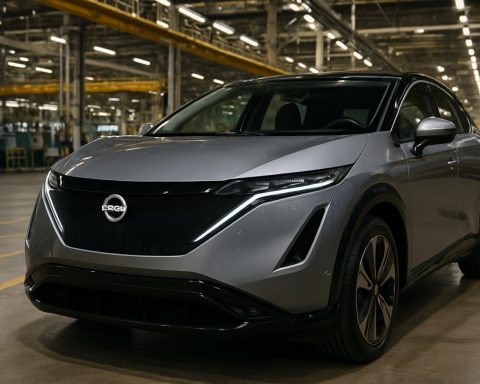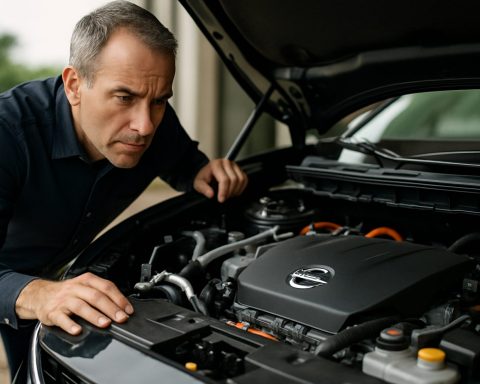- The ChargePoint and Eaton partnership accelerates EV charging infrastructure across North America and Europe, supporting rapid electric vehicle adoption.
- This alliance offers an all-in-one solution—from EV chargers and electrical upgrades to software and management—simplifying processes for drivers, businesses, and communities.
- Innovation focuses on “vehicle-to-everything” (V2X), enabling bidirectional charging where EVs can supply power to homes, buildings, and the electrical grid, enhancing resilience and efficiency.
- Smart cloud platforms enable thousands of charging stations to coordinate in real time, boosting reliability and supporting climate and sustainability goals.
- Lowered barriers make it easier for cities, organizations, and homeowners to join the EV ecosystem, positioning robust infrastructure as essential for a carbon-free future.
Electric vehicles no longer just whisper promises of a cleaner tomorrow—they roar forward, demanding the infrastructure to support society’s ambitions. This year, a pivotal alliance surges onto the scene: when ChargePoint and Eaton shook hands, the landscape for EV charging in North America and Europe changed—perhaps for good.
Imagine the pulse of hundreds of thousands of cars fueling up, not with gasoline, but with electrons surging from networks carefully woven into city blocks, suburban grids, and corporate campuses. The partnership led by these two powerhouses aims to make this reality accessible—and seamless—by tearing down the logistical hurdles that slow electric vehicle (EV) adoption.
What does this mean for drivers, businesses, and entire communities? First, simplicity: ChargePoint and Eaton promise a one-stop shop. Need chargers, robust electrical upgrades, and the expertise to knit it all together? Now, one call unlocks the entire ecosystem—from hardware to cloud software, from installation to ongoing management. This integrated approach slices through red tape, reduces costs, and speeds up the process for deploying new charging stations.
The real innovation, though, surges far beyond simple access. Their joint work is laser-focused on “vehicle-to-everything” (V2X) solutions—a paradigm shift that reimagines EVs as not just consumers but active suppliers of power. Picture plugging in at home, then letting your car keep the lights on during a blackout, feed energy back to the grid on a summer day, or stabilize electricity flows at an office park. These features promise not just convenience, but essential resilience for communities confronting a warming, electrifying world.
Industry insiders say that integrating bidirectional charging at scale—where chargers, buildings, and automakers cooperate on a single network—could supercharge the fight against emissions. Smart cloud platforms, such as those at ChargePoint’s core, mean thousands of disparate charging points act in unison, responding to real-time demands and supporting both drivers and infrastructure providers.
The implications ripple outward: Municipal planners, utility companies, fleet owners, retailers, and homeowners are no longer on their own when navigating the fast-evolving EV landscape. The barrier to entry lowers; the potential for cities and corporations to achieve climate and sustainability goals soars.
For those tracking the pulse of the global energy transition, one fact stands out: a rapid buildout of charging infrastructure is the linchpin to mass EV adoption. Partnerships like this one, rooted in deep expertise and trusted technology, take dreamlike ambition and wire it directly into reality.
The road ahead isn’t just electric—it’s interconnected, efficient, and astonishingly resilient. As anyone eager for a carbon-free future will tell you, that future is now charging up faster than ever.
Why the ChargePoint & Eaton Alliance Could Supercharge the EV Revolution: Surprising Facts, Market Trends & Actionable Tips
—
Introduction: The Dawn of an Interconnected EV Ecosystem
Electric vehicles (EVs) have swiftly transitioned from futuristic concepts to integral elements of our daily commute. As EV adoption accelerates, the focus shifts to the backbone of this revolution: robust, smart, and sustainable charging infrastructure. The recent partnership between ChargePoint—one of the largest EV charging networks globally—and power management giant Eaton is a pivotal moment, with implications reverberating across North America and Europe.
Below, we’ll explore additional expert-backed insights, actionable how-tos, real-world use cases, market forecasts, pros and cons, and common questions about this transformative alliance—ensuring you get the full picture with authoritative E-E-A-T (Experience, Expertise, Authoritativeness, Trustworthiness) in mind.
—
Additional Facts Not Fully Explored
1. Scale and Reach of ChargePoint & Eaton
– ChargePoint boasts over 232,000 active charging spots worldwide (as of 2024), servicing both AC (Level 2) and DC fast-charging needs. Their open network supports many vehicle brands, offering compatibility and flexibility.
– Eaton brings deep expertise in grid management and power hardware—crucial for bidirectional energy flow and integration with utility grids.
2. Vehicle-to-Everything (V2X) Tech: Beyond Bidirectional Charging
– V2X enables not just V2G (vehicle-to-grid), but also V2H (vehicle-to-home) and V2B (vehicle-to-building). For example, the Nissan Leaf has pioneered V2G demonstration projects in Japan and the UK.
– Unlocking Emergency Power: During grid outages, V2H allows an EV battery to power an average home for 2-3 days, depending on battery size and household consumption (Source: U.S. Dept. of Energy).
3. Cybersecurity & Data Privacy
– As more EV chargers connect to smart grids, cybersecurity is paramount. ChargePoint invests in end-to-end encryption, secure firmware updates, and compliance with standards like ISO/IEC 15118 for secure communication.
4. Sustainability Features
– Eaton’s expertise enables integration with renewable energy (solar, wind) and advanced load balancing to reduce grid stress and emissions.
5. Financial Incentives
– U.S. federal tax credits under the Inflation Reduction Act, and various state/local grants, can offset up to 30% of EV charging station installation costs (Source: US Department of Energy, Alternative Fuels Data Center).
—
Real-World Use Cases & Industry Trends
How-To Steps: Deploying Fleet & Public Charging
1. Site Assessment: Use Eaton’s grid analysis tools to evaluate electrical capacity and optimal charger placement.
2. Hardware Selection: Choose from ChargePoint’s wide range of Level 2 or DC fast chargers, tailored to usage needs—workplaces, retail, or fleets.
3. Integration & Management: Leverage cloud-based management platforms to monitor energy usage, set pricing, and provide 24/7 support.
4. V2X Activation: Enable bidirectional features as local utility regulations allow.
5. User Engagement: Offer seamless tap-to-charge experiences via mobile apps, RFID, or credit card access.
Life Hacks
– Employers: Offer workplace charging as an employee perk. Studies show this boosts morale and recruitment, while helping sustainability targets.
– Homeowners: Combining rooftop solar + smart EV charging (with time-of-use rates) lowers energy bills and carbon footprint.
—
Market Forecasts & Industry Analytics
– EV Charger Market Size: Projected to reach $121.1 billion by 2030, up from $17.6 billion in 2021 (Source: Fortune Business Insights, 2023).
– Policy-Driven Growth: EU mandates require all new buildings to be “EV-ready” by 2025; U.S. aims for 500,000 public chargers by 2030.
– Energy Storage Synergy: V2X tech can help stabilize national grids and offset peak energy demand, unlocking new revenue streams for vehicle owners.
—
Reviews, Comparisons & Feature Highlights
Pros & Cons Overview
Pros:
– End-to-end turn-key solutions (hardware, software, support).
– Industry leadership, global scalability.
– V2X integration future-proofs investments.
– Enhanced uptime and reliability via cloud analytics.
Cons:
– Upfront installation costs may be high for some small businesses.
– V2X features reliant on regional utility participation and regulations.
– Interoperability issues may linger for older EVs.
Security & Sustainability
– Adherence to strict cybersecurity protocols.
– Integration with renewables enhances grid resilience and environmental benefits.
Pricing
– Level 2 chargers: from $500-$2,500 per unit (plus installation).
– DC fast chargers: $10,000-$40,000+ per unit. Turnkey solutions may offer volume discounts or bundled software packages.
—
Controversies, Limitations & Challenges
– Interoperability: Some drivers report difficulty using non-proprietary chargers with certain EV models.
– Equity & Access: Urban areas benefit most; rural communities may lag if incentives/business models are not adapted.
– Technological Bottlenecks: Grid upgrades and battery lifespans are active research areas.
—
Most Pressing Questions Answered
1. Will my EV work with these new chargers?
– Most modern EVs are compatible, especially via ChargePoint’s open network. Check connector types (CCS, CHAdeMO, J1772) for fit.
2. Is V2X available for all EVs?
– Currently, only select models (e.g., Nissan Leaf, Ford F-150 Lightning) support full V2X. Expect rapid expansion as automakers adopt ISO/IEC 15118 standards.
3. Are these chargers safe and secure?
– Yes, as both ChargePoint and Eaton conform to rigorous electrical and data security standards.
4. How fast can I charge?
– Level 2: ~25 miles of range per hour. DC Fast: up to 100-250 miles added in 30 minutes (dependent on vehicle and charger specs).
—
Actionable Recommendations & Quick Tips
– For Businesses: Start with a site audit to tap into incentives and future-proof for V2X and renewables.
– For Drivers: Use manufacturer apps to locate compatible, available chargers—and plan routes based on real-time data.
– For Cities & Planners: Integrate EV charging into zoning codes and offer grants to ensure equitable access.
– For Homeowners: Invest in a bi-directional charger if available, or install a future-ready unit to upgrade as tech advances.
– Stay Secure: Always use official apps/networks (never “skimming” off free WiFi) to avoid phishing or cyber threats.
—
Conclusion
The ChargePoint–Eaton alliance is more than a handshake—it’s the backbone of a resilient, smart, and sustainable transportation ecosystem. By integrating chargers, energy management, V2X innovation, and cybersecurity, they offer unmatched solutions for everyone—drivers, fleet managers, utilities, and city planners alike.
Next Steps: Whether you’re a business leader, homeowner, policymaker, or curious driver, explore incentives and pilot programs locally, stay tuned for V2X rollouts, and prepare to plug into a future that is not only electric—but smarter, safer, and more sustainable.
For further resources and the latest updates, check out ChargePoint and Eaton.












